Can You Torch Cold Patch Asphalt? (Advantages & Disadvantages)
-
Pete Ortiz
- Last updated:
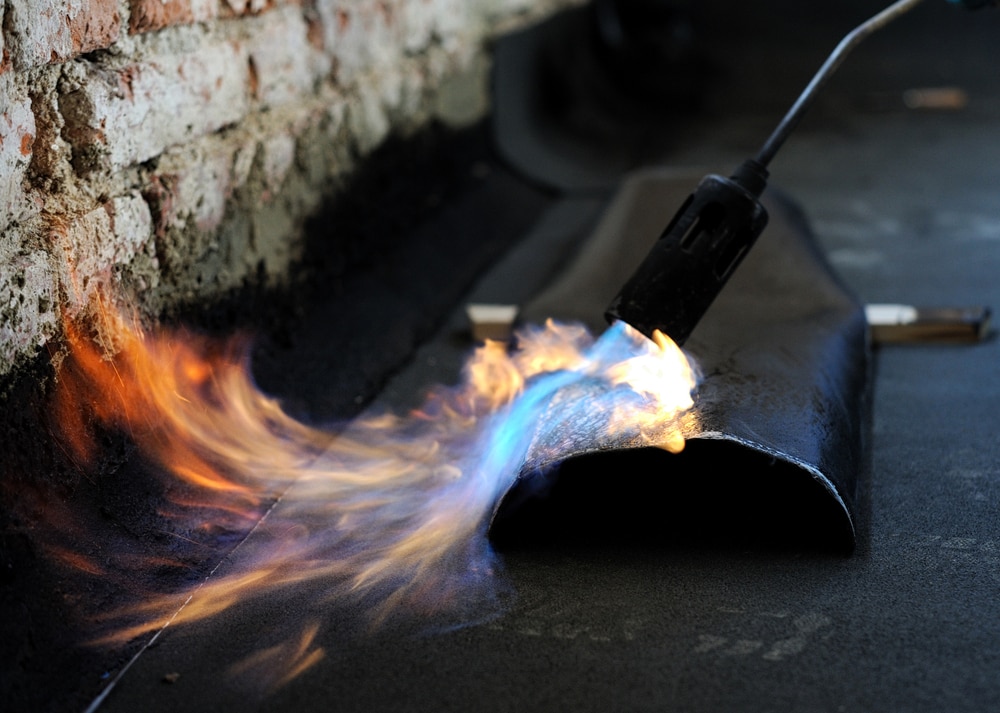
Cold patch asphalt is a temporary solution for filling potholes and fissures in asphalt surfaces. While it’s convenient and easy to use, you may wonder if you can torch it to enhance its bonding properties. Yes, you can torch cold-patch asphalt to create a permanent repair.
Whether to torch cold patch asphalt depends on several factors, such as the type of cold patch material and the application method used. You can only torch cold patch asphalt under special conditions to ensure a successful repair. Otherwise, the high heat can make it bubble, crack, and fail if care is not taken.
Whether you’re a contractor or a property owner, we’ll tell you how torching cold patch asphalt helps. We’ll also provide valuable information on the best way to handle cold-patch asphalt repairs. Keep reading to learn more!
What Is Cold Patch Asphalt?
Cold patch asphalt (cold mix asphalt) is an asphalt repair material used to patch fissures and potholes on parking lots, roads, driveways, bridges, and other surfaces.
You need to mix bitumen emulsion to produce cold patch asphalt. It can also be cut back using cold aggregates. Use cold patch asphalt as an impermanent patching material, particularly during winter.
You can apply cold patch asphalt directly without heating it. Also, you don’t need special applicators or heavy rolling machines when applying cold patch asphalt.
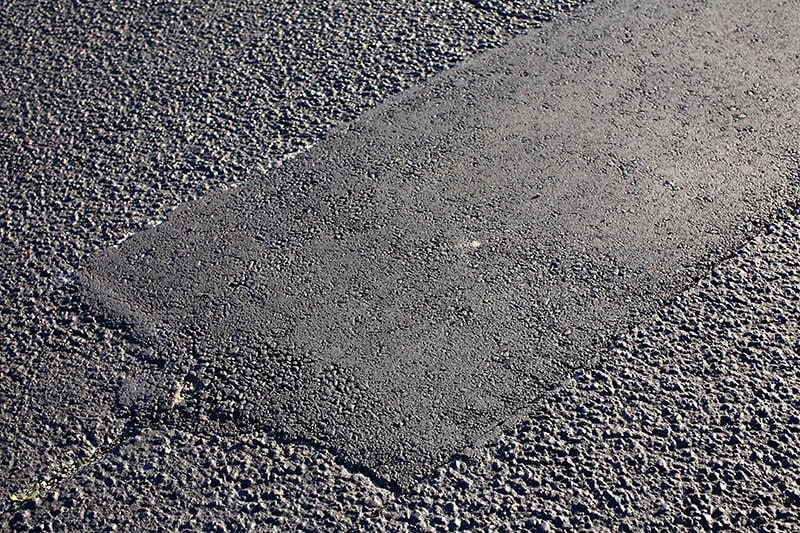
How Does Torching Cold Patch Asphalt Help?
Torching cold patch asphalt involves heating the cold patch asphalt mix using a torch. This way, you increase its workability and make it easier to compact. Heated cold patch asphalt is a long-lasting solution used to repair potholes, cracks, and other damages in roads, pavements, and driveways.
The heat from torching softens the asphalt and makes it easier to spread evenly over the damaged area. Due to this, the cold patch asphalt becomes more durable and resistant to weathering and heavy traffic after torching.
Torching also removes any air pockets in the cold patch of asphalt. It ensures a smoother and more seamless finish.
Besides the mentioned benefits of torching cold patch asphalt, it facilitates the work of repair workers. They don’t need to work hard to mix the cold asphalt. That means there’s no risk of injury to the repair workers’ wrists, hands, shoulders, backs, and elbows.
Now you know how torching cold patch asphalt helps. Let’s look at the advantages and disadvantages of cold patch asphalt.
Advantages of Cold Patch Asphalt
Eco-Friendly
Cold patch asphalt is an environmentally friendly solution for repairing potholes and cracks. Even though you can torch it, cold patch asphalt doesn’t need heating, unlike hot mix asphalt.
You can apply it at lower temperatures. That way, you’ll reduce hazardous gas emissions from its components. Besides protecting the environment, it saves energy. If you use cold-patch asphalt, you can impact the environment while maintaining the safety of roads, pavements, bridges, and many more.
Economical
Hot mix asphalt is expensive because it has to be heated, unlike cold patch asphalt. So, cold mix asphalt is produced and applied at a lower cost. That makes it a cost-effective option for small-scale projects. You can also use it if you’re on a tight budget.
Besides, there’s also a lower cost associated with energy consumption since cold patch asphalt doesn’t need heat.
Convenient
As mentioned, you don’t need special equipment or heating if you’re handling cold patch asphalt, unlike traditional hot mix asphalt. It makes it convenient to use.
That means you can perform repairs fast and easily, even in remote or hard-to-reach areas. Besides, you can store cold patch asphalt for long periods. It won’t lose its quality. That makes it a convenient option for road repair.
Disadvantages of Cold Patch Asphalt
Bonds Slowly
One of the primary downsides of cold mix asphalt is that it sets slowly to the surrounding pavement, road, or driveway. This slow bonding can make the patch loosen over time. In turn, this leads to additional damage that may need re-patching.
To ensure a strong bond, clean the surface you want to apply cold mix asphalt thoroughly. Prepare it well before applying the cold mix asphalt.
Cold patch asphalt may also take a long time to cure. That means the repair work may be prone to damage from traffic and weather for a few days. So, cold patch asphalt is unfit for use in high-traffic areas.
Top 7 Applications of Cold Patch Asphalt (Cold Mix Asphalt)
Cold patch asphalt is versatile in its uses. Some of its uses include:
1. Wheel Rutting
Wheel rutting is pavement deformation that occurs when the repeated passage of heavy vehicles over the same path compresses the soil or aggregates. It also leads to deep, narrow grooves on the pavement’s surface called wheel ruts.
Wheel rutting can cause problems such as increased water accumulation and pavement roughness, decreased ride quality, and pavement cracking. If this happens, it leads to costly repairs or even reconstruction.
Cold patch asphalt can repair wheel ruts. It levels the wheel rut with the surrounding area. You can also compact it for the cold mix asphalt to cure well.
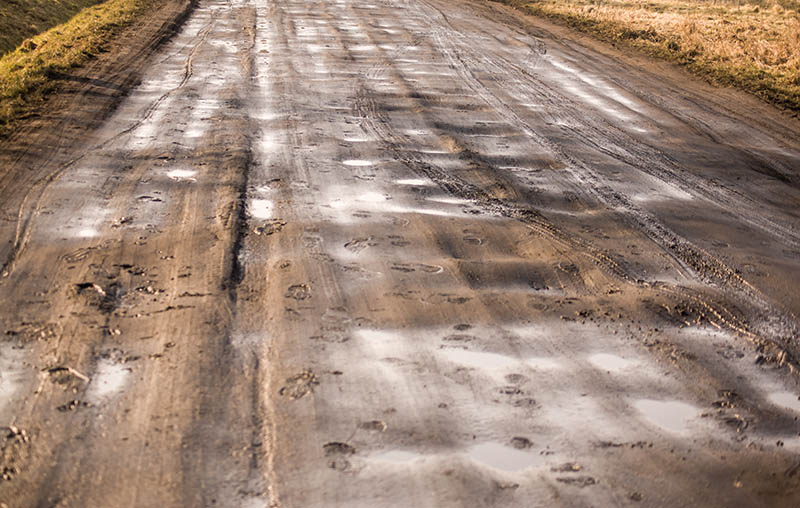
2. Potholes
Potholes are a common issue in roadways, driveways, and parking lots. They can cause damage to vehicles and create a safety hazard.
You can apply cold patch asphalt to fill potholes and prevent further damage.
3. Railway Tracks
If there are railway tracks that crossroads, they need covering if unused for a long time. If covered, drivers drive safely without losing control. Besides, pedestrians won’t trip while crossing a road with railway tracks.
Cold patch asphalt covers unused railway tracks crossing the road. After covering, contractors can open the road for use as it dries fast after applying it.
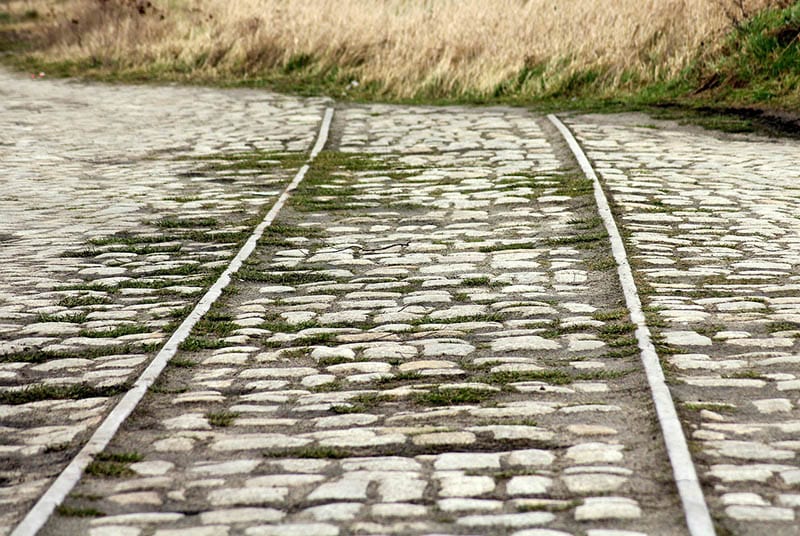
4. Oil Reservoirs
Cold mix asphalt is hydrophobic. A hydrophobic material repels water. The bitumen content in cold patch asphalt makes it hydrophobic, thus perfect for constructing oil reservoirs. The cold mix asphalt forms a hydrophobic layer in oil reservoirs, preventing oil from leaking.
5. Parking Lots and Rooftops

Cold patch asphalt is also the best solution when repairing and resurfacing parking lots and rooftops. The ease of application and fast drying time makes it the best option for these repair projects.
Besides repairing uneven rooftop surfaces, cold mix asphalt acts as a waterproofing layer on the rooftop, so it prevents water damage.
It provides a smooth and durable finish, and its ability to adhere to existing surfaces makes it fit for these projects.
6. Paving
This application is helpful for small-scale paving projects where hot mix asphalt is impractical. With proper compaction, cold patch asphalt can provide a long-lasting solution that will save you time and money compared to traditional paving methods.
The only downside of using cold mix asphalt in paving is that you can only use it in low-traffic areas and rural roads. It’s not that durable compared to hot mix asphalt. Besides, cold mix asphalt cannot endure heavy vehicles or loads, such as buses and large trucks.
7. Utility Cuts
Utility cuts are the gaps in the road caused during the excavation work for installing or repairing underground utility lines, such as gas, water, or electrical lines. These cuts leave the road surface prone to erosion and water damage, further leading to the deterioration of the road or pavement.
Cold patch asphalt is a fast and efficient solution used to repair these utility cuts. It is molded easily to fit the shape of the utility cut, and it will harden to form a permanent repair.
Besides, cold patch asphalt is also weather-resistant. That makes it an ideal solution when repairing utility cuts.
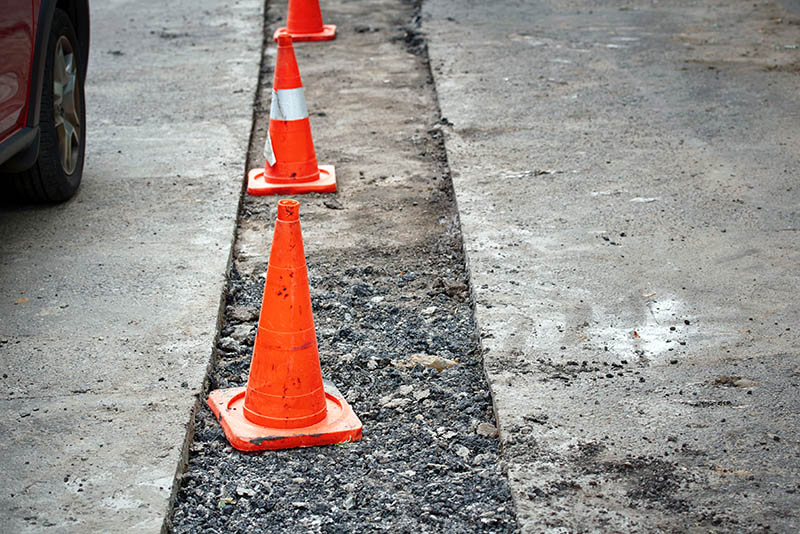
Conclusion
Usually, cold patch asphalt is used for small repair jobs on road surfaces, such as pavements and driveways. You can apply it fast and easily. Besides, you don’t need to heat it or use specialized equipment.
But you can torch cold patch asphalt to make it adhere more securely to the surface it’s applied on though it’s not a recommended practice.
The reason is that the high heat can make the cold patch of asphalt bubble, crack, and fail. It, in turn, leads to a substandard repair you may need to redo. The best thing is to follow the manufacturer’s recommendations and guidelines when applying cold patch asphalt.
Featured Image Credit: PetraMenclovaCZ, Shutterstock
Contents



